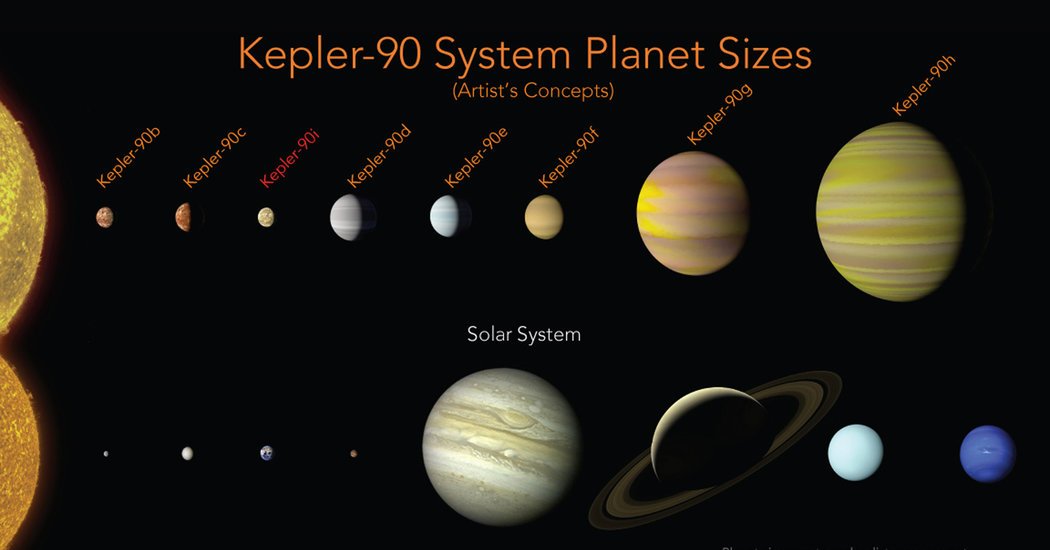With eight planets whirling around its sun, our solar system has held the galactic title for having the most known planets of any star system in the Milky Way.
But on Thursday NASA announced the discovery of a new exoplanet orbiting a distant star some 2,500 light years away from here called Kepler 90, bringing that system’s total to eight planets as well. The new planet, known as Kepler-90i, is rocky and hot. It orbits its star about once every 14 days.
The finding was made using data collected by NASA’s Kepler Space Telescope, a planet hunter that has spotted more than 2,500 confirmed exoplanets since its launch in 2009. Unlike those previousdiscoveries, the new exoplanet was detected with the help of artificial intelligence researchers at Google using a machine learning technique called neural networking.
“This is the first time a neural network specifically has been used to identify a new exoplanet,” said Christopher Shallue, a software engineer at Google who helped make the finding.
Interactive Feature
Kepler’s Tally of Planets
NASA’s Kepler mission has discovered more than 1,000 confirmed planets orbiting distant stars.
The technology, which is loosely inspired by the human brain, is designed to recognize patterns and classify images. It can learn to tell the difference between something simple like a cat and a dog, and also to distinguish exoplanets from cosmic noise.
For the project, the computer looked at a small chunk of data gathered by Kepler from 2009 to 2013. Of the 150,000 stars represented in Kepler’s collection, the computer combed through 670 star systems for signs of exoplanets.
Astronomers spot exoplanets when the celestial bodies move, or transit, in front of their stars. The interaction causes a dip in brightness that creates a detectable signal. So far, the data set has about 35,000 such signals. The astronomers trained the program on a set of about 15,000 signals, and it identified planets correctly 96 percent of the time.
By NICHOLAS ST. FLEUR
https://www.nytimes.com/2017/12/14/science/eight-planets-star-system.html
Source link



